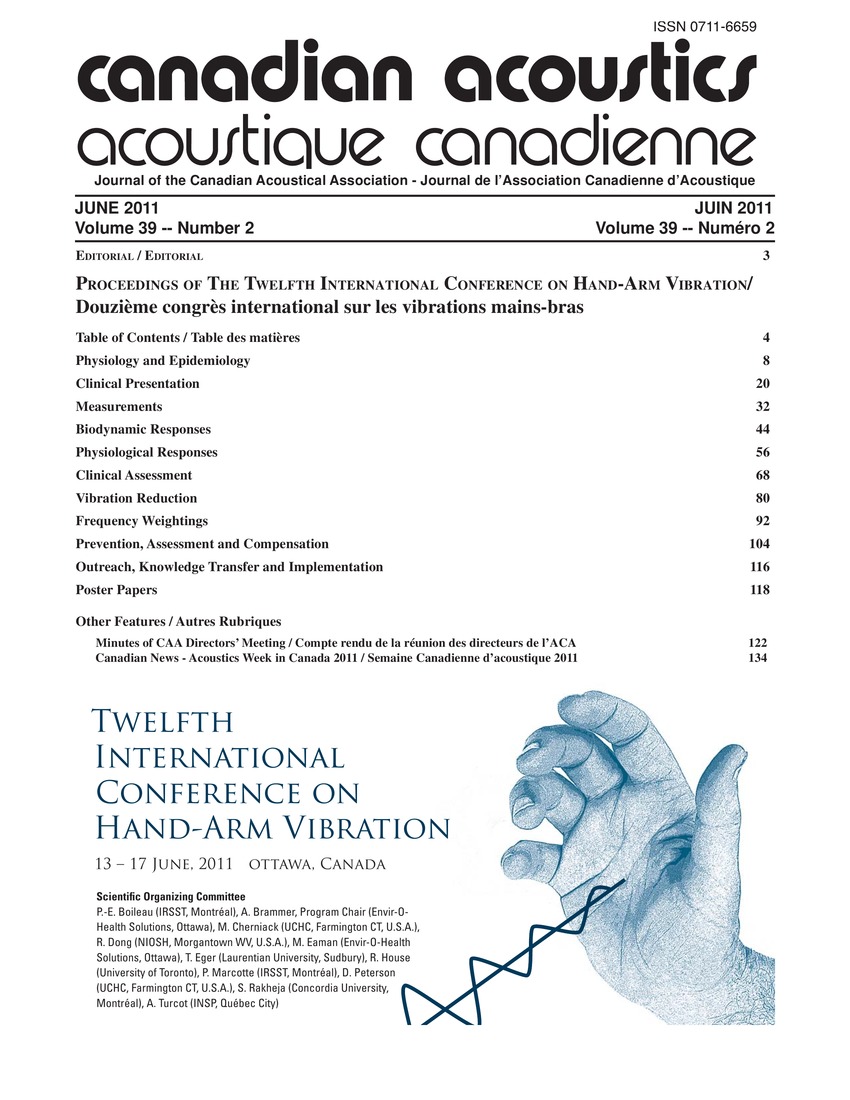Evaluation of gender differences in foot-transmitted vibration
Keywords:
Anatomical structures, Frequency-weighted acceleration, Gender differences, Vibration data, Vibration platform, Vibration transmissibility, Whole body vibrationAbstract
Vibration transmissibility via the feet in individuals exposed to vibration while standing was measured, and whether transmissibility and subjective reports of discomfort is differed between males and females, was determined. Vibration transmissibility through the foot was measured while participants stood on a vibration platform. Vibration data were collected in accordance with the ISO 263 1-1 standard for whole body vibration. Frequency-weighted acceleration in the z-axis entering the foot was compared to frequency-weighted acceleration in the z-axis at the ankle. Measured z-axis vibration was lower at the ankle in all trials with the exception of one male. It can thus be hypothesized that anatomical structures of the foot, for example the heel fat pad, could play a role in attenuation of foot-transmitted vibration from the floor through the foot to the ankle. Vibration transmissibility to the ankle was significantly lower for females than males.Additional Files
Published
How to Cite
Issue
Section
License
Author Licensing Addendum
This Licensing Addendum ("Addendum") is entered into between the undersigned Author(s) and Canadian Acoustics journal published by the Canadian Acoustical Association (hereinafter referred to as the "Publisher"). The Author(s) and the Publisher agree as follows:
-
Retained Rights: The Author(s) retain(s) the following rights:
- The right to reproduce, distribute, and publicly display the Work on the Author's personal website or the website of the Author's institution.
- The right to use the Work in the Author's teaching activities and presentations.
- The right to include the Work in a compilation for the Author's personal use, not for sale.
-
Grant of License: The Author(s) grant(s) to the Publisher a worldwide exclusive license to publish, reproduce, distribute, and display the Work in Canadian Acoustics and any other formats and media deemed appropriate by the Publisher.
-
Attribution: The Publisher agrees to include proper attribution to the Author(s) in all publications and reproductions of the Work.
-
No Conflict: This Addendum is intended to be in harmony with, and not in conflict with, the terms and conditions of the original agreement entered into between the Author(s) and the Publisher.
-
Copyright Clause: Copyright on articles is held by the Author(s). The corresponding Author has the right to grant on behalf of all Authors and does grant on behalf of all Authors, a worldwide exclusive license to the Publisher and its licensees in perpetuity, in all forms, formats, and media (whether known now or created in the future), including but not limited to the rights to publish, reproduce, distribute, display, store, translate, create adaptations, reprints, include within collections, and create summaries, extracts, and/or abstracts of the Contribution.


